Who use full face scuba mask?.It is very rare to see recreational divers wear full masks to dive.
People who use full face mask the most are professionals divers. They often need some kind of additional thermal protection in very cold waters.
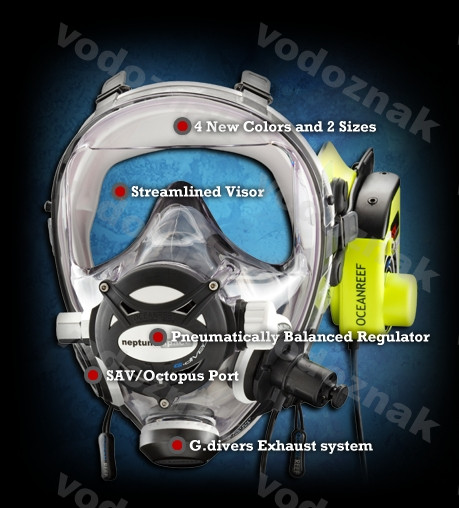
Another group of people who use full mask are usually commercial divers and cameramen, as well as television presenters.
These professionals often choose to use full mask for diving because they have the possibility of incorporating communication equipment. Either to communicate with each other or to transmit or record underwater.
Full-face mask vs normal diving mask
Unlike conventional diving goggles, full diving masks completely isolate the diver’s face from the water. That is, the water does not penetrate inside the full mask.
The mask allows the diver to breathe through the nose or through the mouth. This means in a natural and much more comfortable way.
There is no need to bite the regulator.
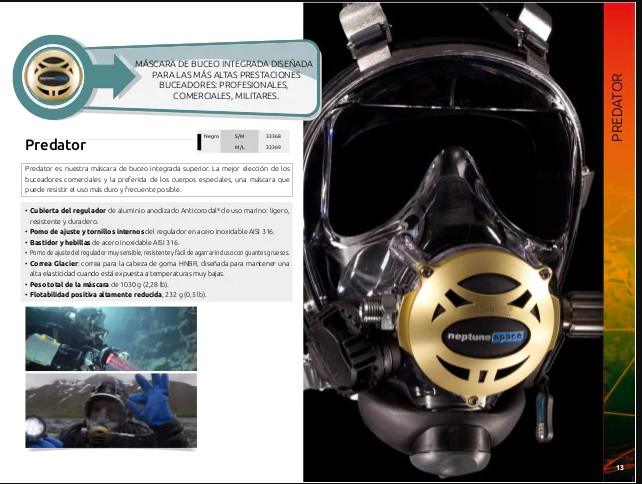
The full face scuba diving mask requires prior training to be used. Although technically they are easier to use than conventional masks.
The fastening system for the face of the full mask prevents water from entering the interior of the mask. Thus facilitating the use of communication devices with this type of mask.
Lets notice that the weight and volume of the full mask is greater than that of the conventional one. Which could make the transfer a bit difficult.
Due to the amount of materials and the cost of manufacturing the additional materials, full masks have a higher cost, which could easily reach three or four times more, so you should consider the use that you are going to give the mask, and evaluate if it compensates the investment that it entails.
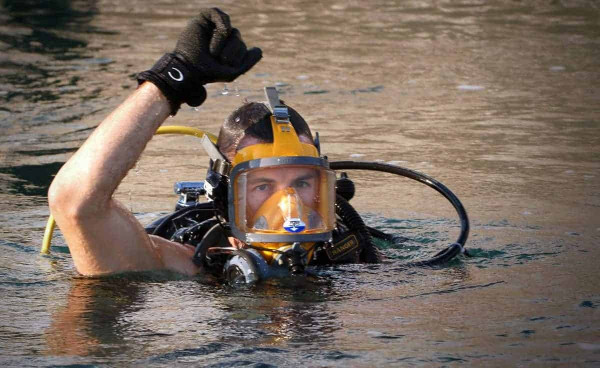
Why do diving masks fog up?
The answer to this question is, because of the steam. When the mask enters at a lower temperature, the humidity condenses and forms the annoying droplets inside the diver’s mask.
Today many of the masks already come with an anti-fog system, so that the diver can have better visibility under water.
How to clean diving masks?
The product to use to clean your diving mask, whether complete or traditional, will depend on the type of material with which it is made.
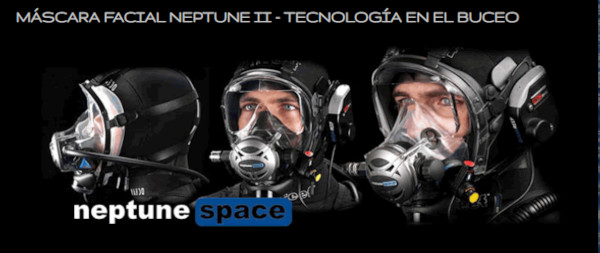
There are specialized products on the market for this purpose. There are those who use soap and water.
Some people even use toothpaste. The important thing is that you are careful not to damage the lenses when cleaning.
What should I consider before buying a full diving mask?
Identify the type of diving you want to do
If what you want is to dive in not very cold waters, perhaps the full mask is not essential.
If your intention is to communicate underwater, there are numerous devices that work and are tested underwater. In that case, you must necessarily opt for a full mask.
Choose good quality equipment
When thinking of a full face mask, it’s not a good idea to skimp on price when you’re investing in equipment that is crucial to safeguarding your life when diving.
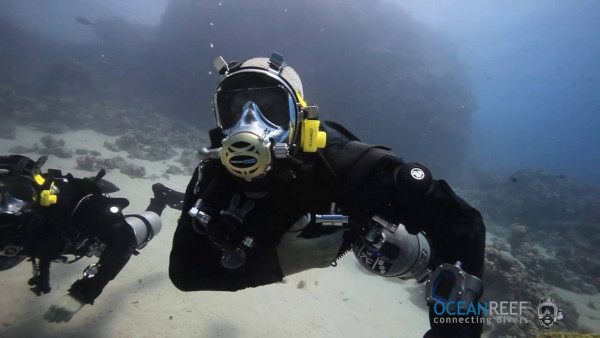
See also: where to get your first scuba gear?
Look for equipment from well-known brands
We recommend you to look for equipment from brands that have developed and evolved over the years, and that will probably last you longer as well, instead of opting for generic brands.
There are numerous recognized brands nowadays who manufacture quality equipment. Among which we can name Cressi, Scubapro, Poseidon, Ocean Reef, OTS, among others.
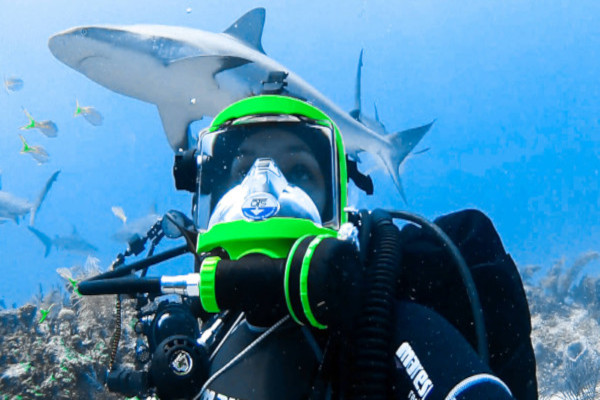
We also recommend that you always make your purchases from authorized representatives, to avoid subsequent inconvenience.
Look at the mask carefully
Don’t stick with the first mask you try on, no matter how much you feel it fits you. Try others while you see if the part of the sicilone that should prevent the entry of water is properly in place and make sure there are no gaps.
Try on different sizes
The size of full masks is not standardized, so feel free to try on various sizes and models, until you find one that you are sure does not hurt your skin or is very loose.
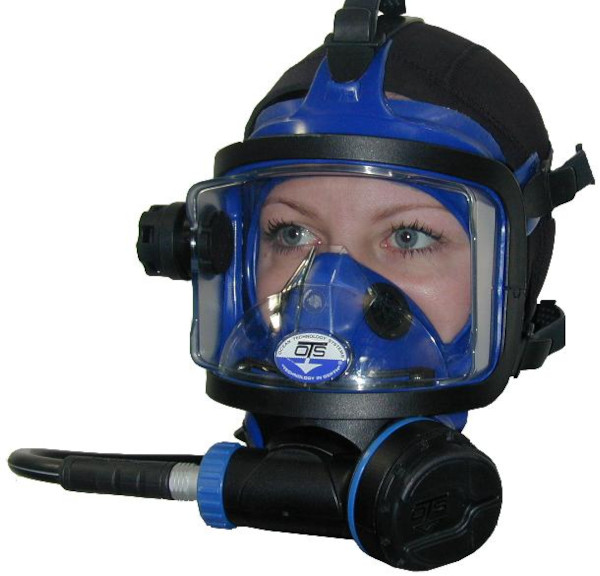
Check your visibility
Before buying your mask, check your visibility. You can put the mask on and see the range of vision you have with it.
Advantages of using a full face scuba mask when diving
Full masks offer greater safety to the diver.
- Breathing with a full mask is extremely natural. The diver does not need to inhale through the mouth, but can do it in the traditional way.This allows that in extreme situations where perhaps the diver could become unconscious, he will still breathe, until a rescue team can reach him.
- As we mentioned before, another fundamental facility is the ability to have a communication system, and thus be able to communicate with other divers or with the ground station.
- As the water does not enter the mask, you can breathe both through the mouth and through the nose, and you will not have the uncomfortable pain caused by having to bite the mouthpiece of the traditional mask.
- Visibility is up to 180 °. That is, much better than with the traditional mask.
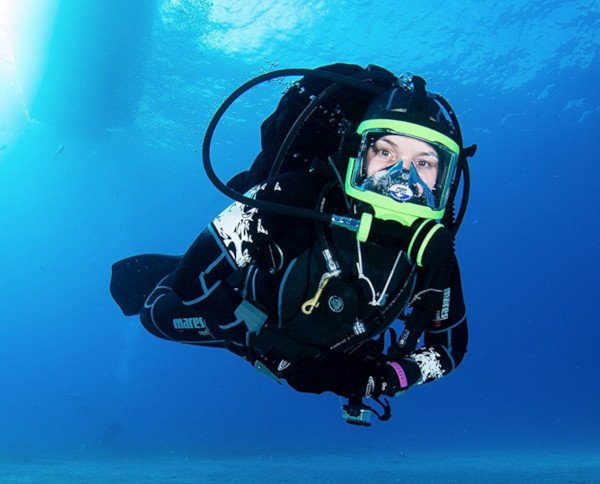
- Full masks offer the highest level of safety in relation to other accessories of its kind, allowing the diver to dive in almost all types of waters, be it the ocean, lakes, rivers, or others.
- Full scuba masks come with integral nose clips for underwater pressure equalization.
Cons of using full face scuba mask for diving:
Full face scuba mask are more difficult to clean
Although the full mask is less likely to fill with water, it can and does happen.
The problem is that unlike the conventional mask, where you keep breathing through the mouthpiece while cleaning your mask.
With the full mask, as the respirator is attached to the mask, when removing the water from the mask, you will not be able to breathe through it.
That makes the cleaning process necessarily have to be faster.
Full face scuba mask are more difficult to put on
Due to the amount of strap that it has for the size, this type of mask can be a little more complicated to put on than the traditional mask. If it is placed incorrectly, there is a risk of water entering the mask.
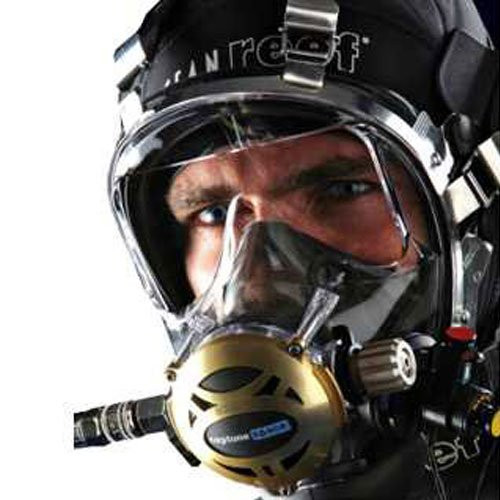
Full face scuba mask are more critical if it comes off
In the case of the conventional mask, if it falls, it does not pose any major inconvenience while breathing through the air regulator that is separate from the mask.
However, with the full mask, if it does come off, the recovery and cleaning process of the mask becomes more critical, so you will have to move more quickly.
Either way, the regulator hose is tied to the mask, so retrieving it if it comes off should be quick.
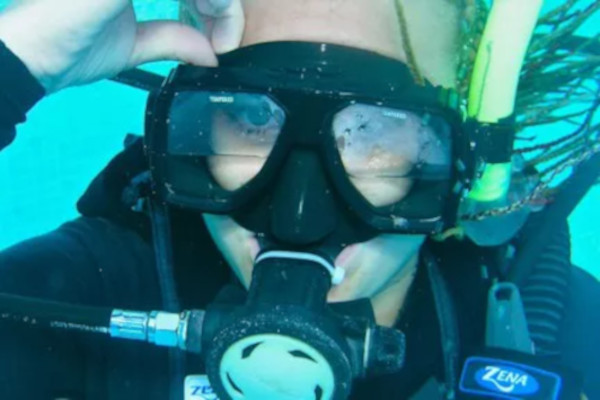
Communication system for the full face scuba mask
Definitely one of the great improvements that full masks have, apart from allowing you to breathe naturally, is that they allow you to use modern communication systems.
This has revolutionized professional diving today in many ways.
For those whose job it is to submerge, often with zero visibility and trying to move underwater, what they can hear through communication systems can make a big difference for them to finish their respective underwater mission, either to cheer or to receive. addresses.
Communication equipment is not all operated in the same way. Here we lend you some.

Wireless Systems
Wireless systems consist of headphones and microphones that go through the full face mask.
The signal is transmitted to the diver through a system that is based on shore.
This system has the limitation of having to be tied in a certain way to the base, which limits the range of the diver, either for search or operation.
Anchored system
It is used to communicate the diver with a communications unit on land, in both directions.
It consists of a system based on wiring, on the one hand one end is in the full mask of the diver, and on the other hand in the base that goes on land.
The drawback with this system is obviously that the coverage range depends on the length of the cabling and its handling.
Push to talk system
There are two different microphone systems. On the one hand we have the PPT (Push to talk) system, that is, “push to talk”
In this system the diver must press the button with one hand to communicate with the surface.
This helps to avoid unnecessary chats with the base and to be able to stay with him centered.
On the other hand, with this system the diver must have one hand free each time he is going to transmit.
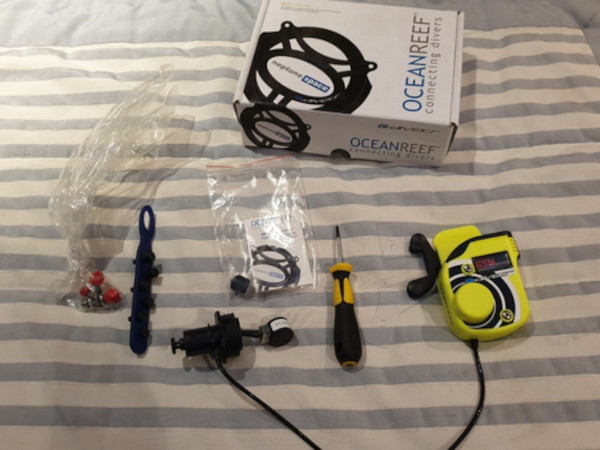
Voice activated communication system
Another type of microphone is the one that you activate it by voice or VOX system.
In the VOX system the diver can speak whenever he needs to communicate with the base on land.
This system has a disadvantage. The activation of the communication could give you involuntary before some strong breathing of the diver, for example.
Surface systems
Surface systems are different. There are them in different sizes and scopes.
Some have very large equipment, which allows divers to communicate with each other.
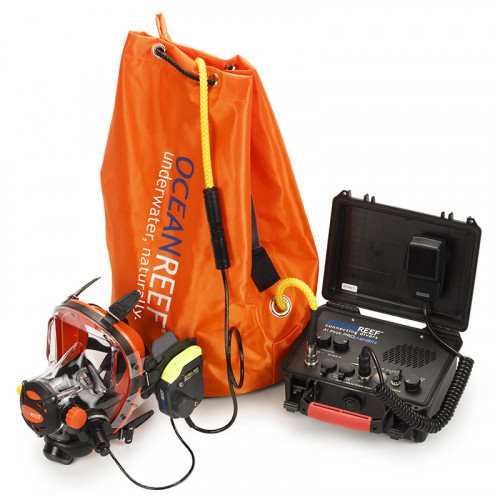
Communication system maintenance of the full face scuba mask
Once you decide what type of system you are going to use, it is important that you have a maintenance plan for the equipment.
You must bear in mind that the batteries must be charged every certain period of time.
Safety is the fundamental aspect when we refer to the communication systems of full masks for diving.
That is why once you have the communication system that best suits your needs, you can take training courses to operate them.
Similarly, it is extremely important that you properly maintain the equipment, replace the batteries and always check that everything is working correctly.
Requirements for diving with a full face scuba mask
Those are the main requirements:
- Minimum age 18 years
- Be an Open Water diver or similar from another organization.
- Medical certificate .
- Diving equipment.
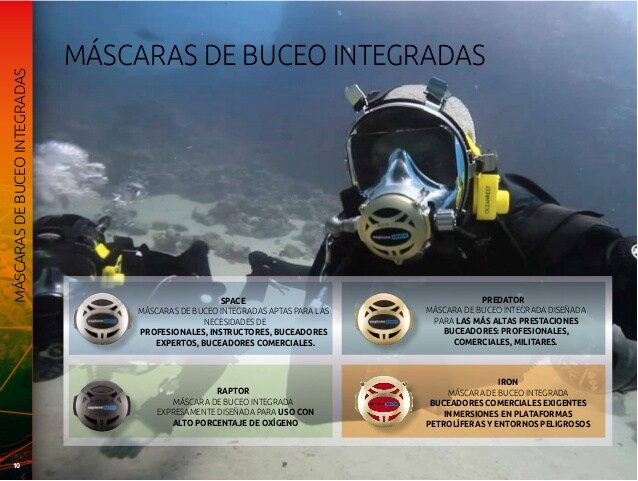
Summary: When is it okay to use full face scuba mask?
Full diving masks are for professional, commercial, scientific or technical diving. Although today many diving enthusiasts choose to use this type of mask.
Full diving masks are easy to have a communication system, which serves to communicate between divers or with an operator on land, because it does not allow water to enter the interior of the mask, in the space between the diver’s face. and the mask.
There are several communication systems that can be used, but the choice of the same depends on the use that is going to be given.
Diving with a full mask is much more enjoyable because you can breathe both through your mouth and through your nose, avoiding the discomfort and effects of biting into the mouthpiece of a traditional mask.
It is essential for you to take the course of use of the complete diving mask, to be able to operate it.
You must be at least 18 years old and have a basic Open water diving certification to dive with a full mask.
